Editor’s note: A recent National Park Service press conference dealt with the pressing issues resulting from record flooding in Yellowstone National Park this week. Questions about the health of the park’s beloved fisheries were not answered during the event – understandably, given the severe damage to the park’s infrastructure and the immediate needs of people in communities like Gardner, Cooke City and Mammoth. We will continue to monitor the state of the park’s fisheries in light of the recent flooding, and when we know more, we’ll let you know.
Under normal conditions, trout deal quite well with high water. During the worst of spring runoff, they stake out the calmer edies and the quiet water that might flow over a bottom that’s normally high and dry.
And it’s very likely that the trout dealing with the record flooding in Yellowstone National Park this week – an occurrence that park Superintendent Cam Sholly described Tuesday as a 1,000-year weather event – will be just fine.
At least in the short term. But Yellowstone’s fisheries story is nuanced. It’s not one where trout simply need water to get by. Over the last decade or so, the park’s fisheries biologists have dedicated their lives to improving and restoring the park’s native trout and grayling fisheries – an effort that taxpayers have helped fund and volunteers have helped execute.
This week’s record flooding that has destroyed homes, washed out normally reliable roads and pulled bridges from their pilings could also be setting the park’s native fish recovery efforts back, and it could be setting them back years.
During an online press call on Tuesday, Sholly understandably spent an hour with national media addressing the pressing issues. How is the park going to rebuild? How long will it take to reopen the gates, let alone the washed-out roads? Has anyone died (thankfully, no)? When will power be restored?
These are top-of-mind issues that require immediate attention from the superintendent who, also understandably, looked exhausted as Zoom blasted his image across the internet on Tuesday. These are the issues that need attention now.

Written questions about the park’s fisheries were not addressed Tuesday – the National Park Service has bigger fish to fry. But the time will come when Sholly and the park’s biologists will have to turn their attention to the state of Yellowstone’s native trout and grayling. And when they do, there’s no telling what they might find.
First and foremost, the effort to suppress lake trout in Yellowstone Lake is scheduled to continue, at least according to the pre-flood plan. It’s possible that netting operations might be delayed, but by the time fall comes around, there’s a good possibility that suppression efforts using oxygen-eating plant-based pellets to cover known lake-trout spawning beds will go ahead as planned. These efforts are bearing fruit – the lake’s native Yellowstone cutthroat trout are in the midst of a rebound thanks to the suppression of invasive lake trout, which are native to the upper Midwest and Canada.
But the lake is in the middle of the park – most of the flood damage occurred in the park’s northern reaches, where the road between Gardner, Mont., and Cooke City, Mont., is now impassable. Sholly expressed sincere doubt on Tuesday about the future of that road, at least in the short term.
“We will likely not reopen the road between Gardner and Cooke City for the rest of the season, looking at the damage,” Sholly said. “Even if we got started right, I'm not sure we could get the road on the northern end reopened.”
Native trout restoration efforts in the park’s northern region are significant. Biologists have been monitoring the encroaching non-native rainbow trout population into the Lamar River watershed and even into the meadow reaches of Slough Creek, a native Yellowstone cutthroat trout strong hold and one of the best places in the park to visit and cast to trophy-sized fish. With access to Slough Creek cut off for now, those monitoring efforts are likely on hold.
Farther east, the Park Service has invested significant time and money to remove invasive brook trout in Soda Butte Creek near the park’s northeast entrance near Silver Gate and Cooke CIty. That project, too, might be put on hold.
To the west, where U.S. Highway 191 skirts the edges of the park as it runs between West Yellowstone and the Bozeman area, the Park Services has in place at least two fish barriers meant to keep non-native trout from encroaching into newly established west slope cutthroat trout and grayling waters. Just north of West Yellowstone, the Park Service installed a barrier on Grayling Creek that is intended to keep non-native rainbow and brown trout from Hebgen Reservoir from migrating into the creek’s upper reaches, which have been reestablished as a native west slope cutthroat trout and grayling stream. If flood waters have damaged the barrier, it would be a huge blow to the park’s native fish reintroduction efforts there.

Farther north, the Park Service installed a similar barrier on Specimen Creek, a tributary to the Gallatin River. This barrier is meant to keep non-native trout from the Gallatin drainage out of the upper reaches of Specimen Creek to protect the genetic integrity of the reintroduced west slope cutthroats that have established a foothold there. Similarly, if the barrier has been breached, those restoration efforts are in serious jeopardy.
Finally, in the park’s interior, on the upper stretches of the Gibbon River, the Park Service has worked to remove non-native brook and rainbow trout from Wolf Lake, Grebe Lake and the upper Gibbon. Native west slope cutthroat trout and grayling now swim there. The saving grace for this restoration effort is a natural barrier at Virginia Cascades – it’s very unlikely (and probably impossible) for non-native fish from the lower Gibbon to climb that cataract, even during the highest of flood waters.
Nevertheless, as Sholly and his team work to reopen and rebuild the park’s northern tier, questions about the state and health of Yellowstone’s native fisheries remain.
Yellowstone was formed by intense geological and hydrological forces. It’s one of the most precious natural landscapes on the planet. There’s irony here. Nature creates and, in the blink of an eye, nature destroys.
The toll that the wrath of nature in the form of this week’s unimaginable floodwaters will take on the park’s native fish is yet to be known.




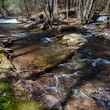
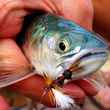



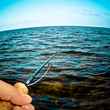
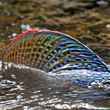


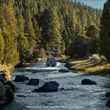




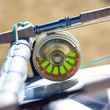
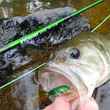



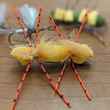
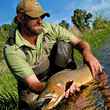




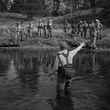
Comments